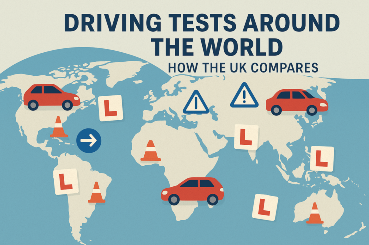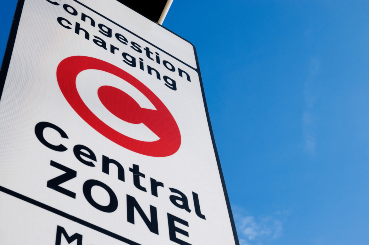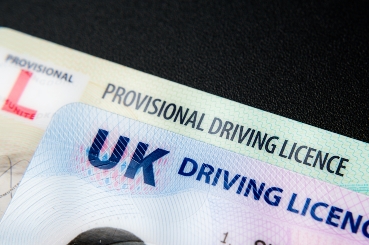Do you ever find yourself reading a car specification and thinking “what does that mean”? Well, that’s okay because you aren’t alone! It’s so easy to get lost by automotive jargon used in news posts or when browsing for a new car, but car buying should be simple!
That is why we have created a guide on all the most common terminology, acronyms and abbreviations you may find yourself coming across. Don’t get scared off by the fancy words, read the guide about what the Electric and Hybrid Car jargon means.
A
Alternative Fuel Vehicle:
This term is used for a vehicle that runs on a fuel other than traditional petrol or diesel. It includes engines that don’t solely rely on petroleum such as PHEV, EV, FCEVS, but also includes HEVs.
AC/DC:
This references both Alternating and Direct Currents. See our definitions of AC and DC below for specific definitions of these types of electricity flows.
AC:
An Alternating Current is a type of electricity flow that can charge electric vehicles at slower speeds. You’ll find AC on home charging wall boxes.
B
Battery Electric Vehicle (BEV):
A car that runs purely on electric power, stored in an onboard battery that is charged from mains electricity (typically at a dedicated chargepoint).
C
Combined Charging System (CCS):
This is the standard for charging electric vehicles in the EU. Its layout consists of two DC pins that sit below the standard Type 2 connector plug.
Chademo Plug (CHAdeMO):
This is the name of a large, round four-pin charging plug that is only used at rapid charging stations. ChDeMo plugs are capable of Vehicle to Grid (V2G) charging but are less powerful than CSS. Many East Asian manufacturers like Nissan and Toyota use these chargers.
Charging Point:
The name for the location where you fill up your car with electricity.
Charging Station:
An element of infrastructure that safely supplies electric energy for the recharging of electric vehicles, also known as an EVSE (Electric Vehicle Supply Equipment).
Contactless Payment:
Available on some rapid chargers, it is possible to start and pay for your charging session with the tap of your contactless credit/debit card.
D
Direct Current (DC):
A type of electricity flow that can charge electric vehicles at faster speeds. Electric cars have to convert AC power from the mains into DC before they can store it in the battery and this process takes extra time. DC charging stations cut out this process by providing DC power straight to the battery.
E
Electric vehicle (EV):
Any vehicle that uses electric motors, either in full or in part, as propulsion. Can be used as a catch-all term for BEVs and PHEVs, but often used to refer to pure electric vehicles i.e. BEVs.
Extended-Range Electric Vehicle (EREV):
Although the electric motor of a PHEV always drives the wheels, EREVs feature an auxiliary power unit, usually an internal combustion engine, that acts as a generator to recharge the battery when it runs out.
F
Fast Charging:
A type of charging station, typically capable of charging at higher speeds.
Fuel Cell Electric Vehicle (FCEV):
Another name for a hydrogen car. They run on hydrogen instead of electricity and typically have ranges that exceed 300 miles.
Full Hybrid or “Self-Charging” Hybrid:
A 100% fossil fuelled hybrid car. A small battery is charged through regenerative braking that generates some electric power in combination with a combustion engine, but the car’s energy originates from petrol. The electric motor can only power the car itself for short periods at low speeds.
G
H
Home Charging:
Plugging your electric car in to charge while it is parked at home, typically overnight. A dedicated home charging point is the best and safest way of doing this.
Hybrid Car:
Any vehicle that has a petrol or diesel engine and an electric motor. The main types are full, mild and plug-in hybrid. HEVs don’t have a plug, instead, they get their power from the engine or through regenerative braking.
I
Internal Combustion Engine:
An Internal Combustion Engine is a traditional engine that typically runs on either petrol or diesel. In 2030 there will be a ban on the sale of new ICE vehicles in the UK.
J
K
Kilowatt (kW):
This equates to 1,000 watts. This unit of measurement is typically used when referring to electric vehicles.
Kilowatt-Hour (kWh):
A kilowatt-hour is a unit of measurement for calculating how much electricity you’ve used and how large a battery is. It is the mpg equivalent for electric cars.
L
Li-ion:
Lithium-ion is the type of battery that is used in electric cars, phones and laptops.
M
Mild Hybrid:
Mild hybrids also have a small electric motor, but unlike full hybrids, it is solely used to assist the petrol engine. The car cannot drive on battery power alone.
Manufacturer’s Claimed Range and Efficiency:
This has traditionally been the most optimistic measure, achievable in specific circumstances.
N
O
P
Plug-in hybrid electric vehicle (PHEV):
A car with a combination of a traditional internal combustion engine and a rechargeable battery, allowing for either pure electric-powered driving or extended range from a combination of the petrol engine and electric motor.
Pure Electric:
A vehicle powered solely by electric motors using power provided by on-board batteries.
Q
R
Range:
The distance a vehicle will travel on a single charge from 100% capacity.
Range Anxiety:
The fear of running out of charge before reaching a charging point.
Rapid Charging:
A type of charging station, typically capable of charging at higher speeds.
Regenerative Braking:
A system that uses energy generated from braking to add charge back into the battery. Also known as brake recuperation.
S
Single-phase Power:
Typically found in most UK homes and some businesses, this is what all standard 3-pin plug sockets provide. A single-phase electricity supply can power a dedicated chargepoint up to 7kW.
Slow Charging:
A better option for home charging, this allows for both top-up and overnight charging through a dedicated chargepoint. The 3.7kW Pod Point Solo is a good example of this type of charging point and provides faster charging times than a 3-pin socket.
T
Transmission:
Typically a manual or auto/semi-auto. For electric and hybrid models, this is normally limited to automatic.
Type 1 Cable:
A circular charging plug that has 5 pins and a clip. This type of connector is much more common in the US.
Type 2 Cable:
A charging plug that has 7 pins and a flat edge. This type of charger is becoming the standard on most of the new electric vehicles.
U
UK 3 Pin:
The plug for a standard UK electrical outlet. This connector can be used to charge some EVs in an emergency but lacks the safety, speed and security features of a dedicated chargepoint.
ULEZ:
The Ultra Low Emission Zone is an area in London where high polluting vehicles get charged a daily rate if they drive within its borders.
V
Vehicle to Grid (V2G):
The concept of using your electric car battery to release power back through the charger either for use in the local building or back into the grid at large during a time of high grid demand.
W
Wall Box:
A unit installed to provide an accessible charging point.
WLTP:
The Worldwide Harmonized Light Vehicle Test Procedure is used to measure the fuel consumption and CO2 emissions from passenger cars and vans. This testing is conducted in a laboratory across different temperatures to reflect real-world driving conditions. In 2018, WLTP became mandatory for measuring the C02 emissions and EV ranges on all new cars in the EU.
X
Y
Z
Has this helped you out at all? Make sure to keep an eye out for more Car Jargon busting guides.
If you find yourself struggling with anything EVs and Hybrids, head over to our dedicated hubs to help you out! Let us make car buying simple!


















